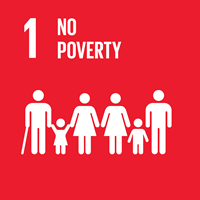Fairtrade and the Sustainable Development Goals – An Introduction
In 2015 the United Nations adopted 17 Sustainable Development Goals (SDGs) intended to transform our world – to end poverty, protect the planet and ensure prosperity for all by 2030.
The Goals “recognize that ending poverty must go hand-in-hand with strategies that build economic growth and address a range of social needs including education, health, social protection, and job opportunities, while tackling climate change and environmental protection.”
Fairtrade Canada is committed to playing our part because the SDGs are closely linked to our Vision and Mission. We will be focusing on specific Goals each month during the next two years, exploring how Fairtrade makes a difference.
For January and February we highlight:

Goal 1 – End poverty in all its forms everywhere
767 million people live below the international poverty line of $1.90 per person per day, with millions more barely exceeding that level and at risk of falling back below it. This means that close to 10% of the world’s workers and their families live in poverty, with many below the extreme poverty level of $1.25 per day. While these figures have improved over the last couple of decades, there is clearly still a massive amount of work to do.
Poverty doesn’t just mean a lack of money; it means living with hunger, having limited access to education, health care and other services, facing discrimination and other dehumanizing factors.
Many of the targets within the SDGs are closely related to issues that affect the Global South’s small-scale farmers and workers so Fairtrade is well positioned to contribute to their progress.
For example, Target 1.4:
By 2030, ensure that all men and women, in particular the poor and the vulnerable, have equal rights to economic resources, as well as access to basic services, ownership and control over land and other forms of property, inheritance, natural resources, appropriate new technology and financial services, including microfinance.
Many of the farmers and workers who produce our favourite products like coffee, cocoa, bananas and sugar live below or close to the poverty line and are vulnerable to price fluctuations, climate change and dishonest buyers who can take entire harvests and then disappear without paying.
Fairtrade makes a difference with:
- The Fairtrade Standards, which set out social, economic and environmental practices intended to protect people and the planet.
- The Fairtrade Minimum Price, which acts as a safety net for famers and workers and protects them from fluctuations in the market price.
- The Fairtrade Premium, which is an extra sum of money, which goes into a communal fund for workers and farmers. The Premium means they can invest in their communities in measures such as improving the productivity of their farms, building schools, roads and clinics or whatever other else is democratically decided. See this post from Fairtrade International for an example of how one coop in Honduras uses the Fairtrade Premium to benefit more than 5,000 people.
- Training on how to cope with diseases and other environment shifts which occur as a result of climate change.
Fairtrade supports farmers and workers in gaining more from trade and through this they are empowered to control their lives.
We will cover Goal 11 – sustainable cities and communities – in a future blog post.